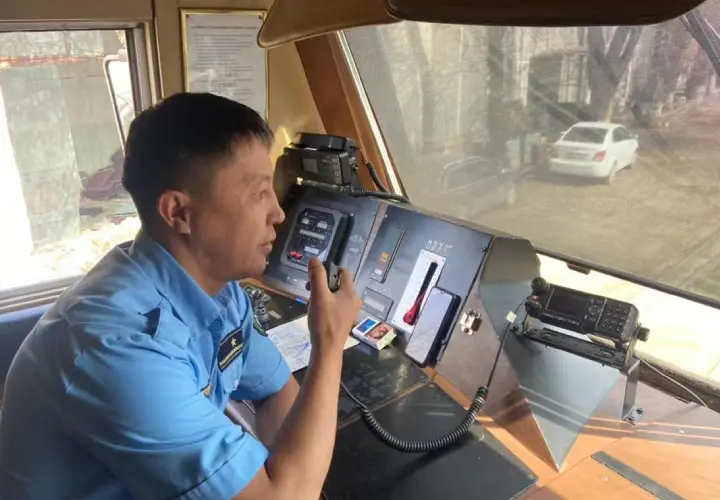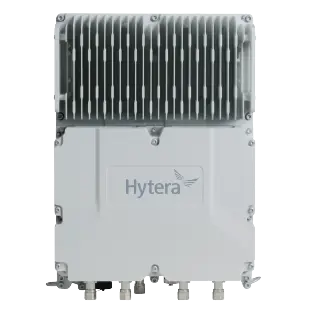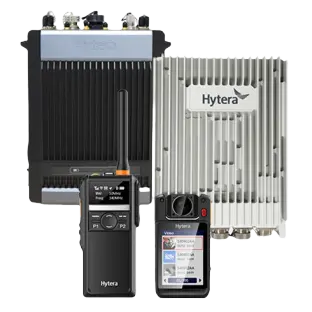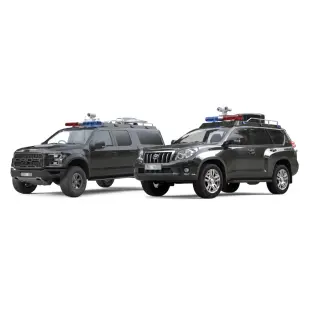
-

User
Kazakhstan Temir Zholy (KTZ) -

Project Time
2012-2015 -

Market Segment
Transportation -

Product
DTT803 TETRA data modems
PT580H PLUS TETRA portable radios
MT680 TETRA mobile radios
PTC680 dual-mode (LTE/TETRA) rugged radios
DIB-R5 TETRA outdoor base stations
Challenge
The European Train Control System (ETCS) is a signaling, controlling and train protection system currently used by European railways. Its Level 2 is a digital radio-based system.
GSM-R communications technology was the first choice for ETCS Level 2. However, Due to a lack of spectrum availability and its high cost, finally a TETRA solution was selected as a signaling data bearer by KZT.
Hytera TETRA is quite different from the current technology, GSM-R & ETCS, therefore all modifications need to be tested, tailored and verified to interface with the signaling provider.

Solutions
Since 2012,Hytera has worked with Kazakhstan's national railways company to continuously deploy KTZ TETRA network to support a rail signaling solution based on ETCS in the following three railway lines:
--Kandyagash – Nikaltau, 150KM
--Кызылорда - Шиели(Kyzylorda-shieli),180KM
--Хромтау – Айтикеби( Khromtau-aiteke),600KM

The Hytera TETRA solution used for voice communications and data applications, including train signaling and telemetry data of trains, increasingly help optimize KTZ's freight and passenger operations.
--Totally 48 Base Stations with a minimum capacity of 2 transceivers were deployed by KTZ. These Base Stations are directly connected over IP backbone and all switching task for voice and data are implemented by centralized architecture at 4 separated regional points. 900+ TETRA terminals make train staff's operation more efficient and safer.
--The Network Management System (NMS) is available with a wide range of software, such as Voice and Data Management and a comprehensive Network Management tool, including subscriber management and network performance statistics.
--Redundancy features ensure continuous radio operation. Redundancy of controller, transceivers and power, with fallback operation of the base stations, assures voice and data communication when the network fails..

About Kazakhstan Temir Zholy
Benefits
The train radio control system allows KTZ’s control center to divide the railway into sections, so it can track the location of the locomotives using GPS positioning. The TETRA radio system enables train crews, station staff and dispatchers to keep in contact at all times.
In 2020, for the first time in the world, a system of interval regulation of train traffic was launched using the TETRA radio channel on the Khorgos-Almaty section of the Kazakhstan railway network. It is projected to enable the increase of freight traffic by 30-50%.
Train Radio Control System
The KTZ project demonstrates that TETRA is a reliable solution for both voice and data transmission for railway operations. In comparison with GSM-R, the Hytera TETRA solution provides better spectrum efficiency and wider coverage, and adds more mission-critical features. TETRA technology also offers considerable budget savings for railway operators.
Train Approach Warning System
The system uses pre-recorded warning notifications to automatically send an alarm to employees’ radios when a train is approaching or entering a designated geo-fenced high-risk area. It also tracks the location of employees to enhance the safety of personnel working on the railway tracks.
Notification System at Railway Crossings
The railway crossing alert system allows the train driver to assess the situation at a railway crossing from a distance of 3-5km. Crossing points equipped with motion sensors, a TETRA modem and GPS positioning can detect if there is an object on the crossing and send a voice notification over the radio system to the train driver. This will enable the driver to slow or stop the train in time, which would not be possible if the driver had to rely only on his vision.
IoT Solution
The TETRA radio system can be linked to a wide range of IoT-based sensors on the trains and cargo wagons such as electronic seals, smoke detectors, temperature sensors, and weight sensors to monitor and guarantee the safety of the cargo during transportation. If one of the sensors detects a change or a problem, the system will immediately see it and promptly inform the nearest railway staff. The solution is also suitable for monitoring unmanned infrastructure and facilities along the railway tracks. The train collects data from track-side sensors when approaching the equipment or facility.
Centralized Dispatching
RTEL Group developed a single server ecosystem for digital processing and integration of voice, data, and video services. The new automated workplace allows dispatchers to control the movement of all the trains. It supports individual, group, broadcast and all-call voice services, short messages/status messages, GPS positioning of rolling stock and railway employees, locomotive radio terminals, voice recording and tracking history of radio terminals, and it has an event log/call log.
A key challenge in the digitalization of railways and transport in general is to find an efficient and cost-effective data transmission solution. Hytera’s TETRA-based system provides a comprehensive solution to transmit real-time data from moving trains and locations such as train depots.
Ready to talk? Get in touch with us.













































